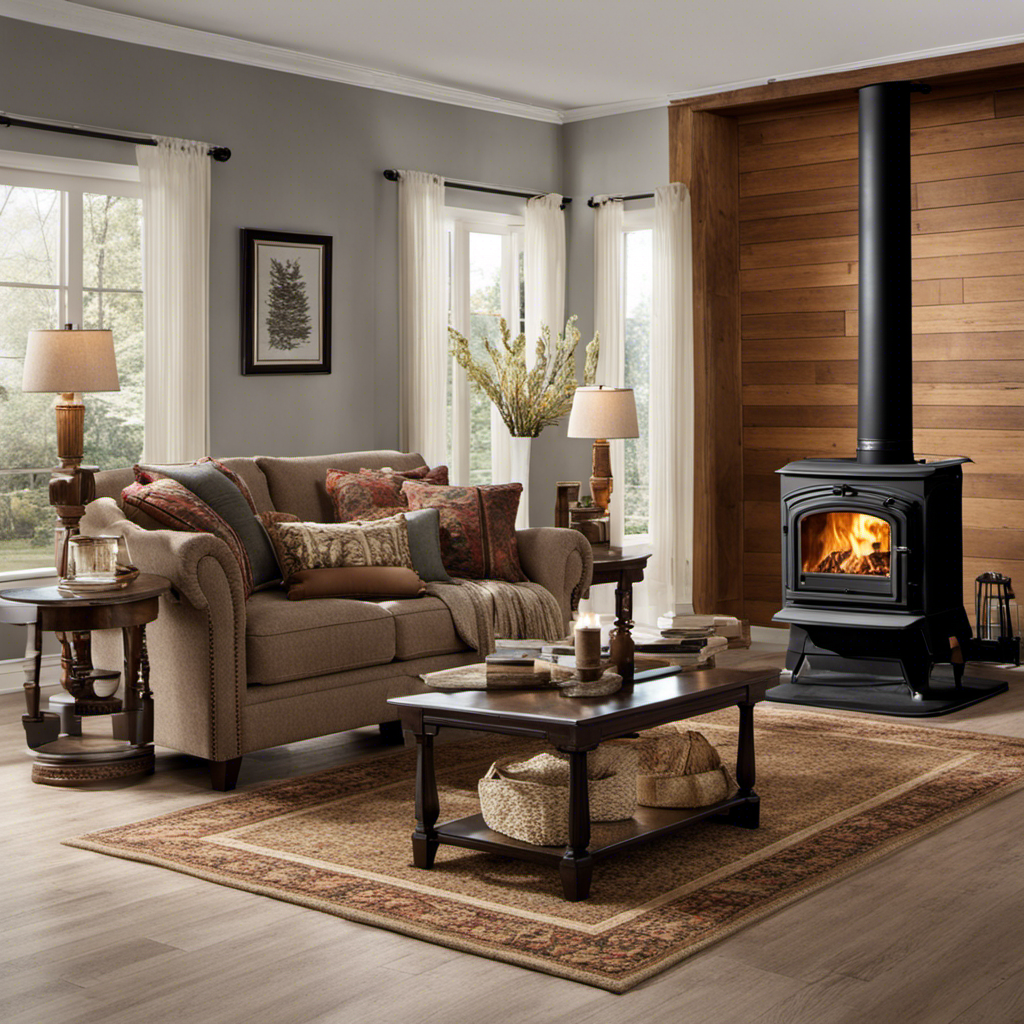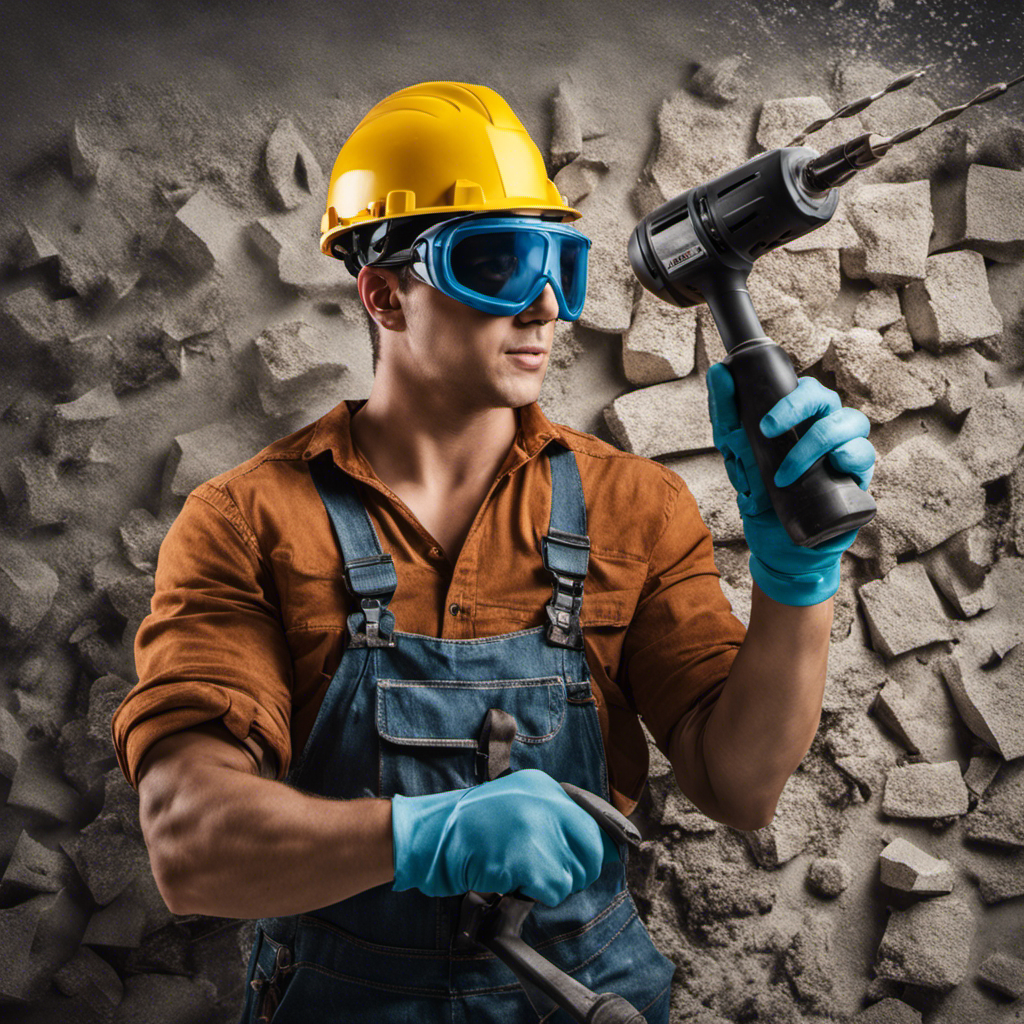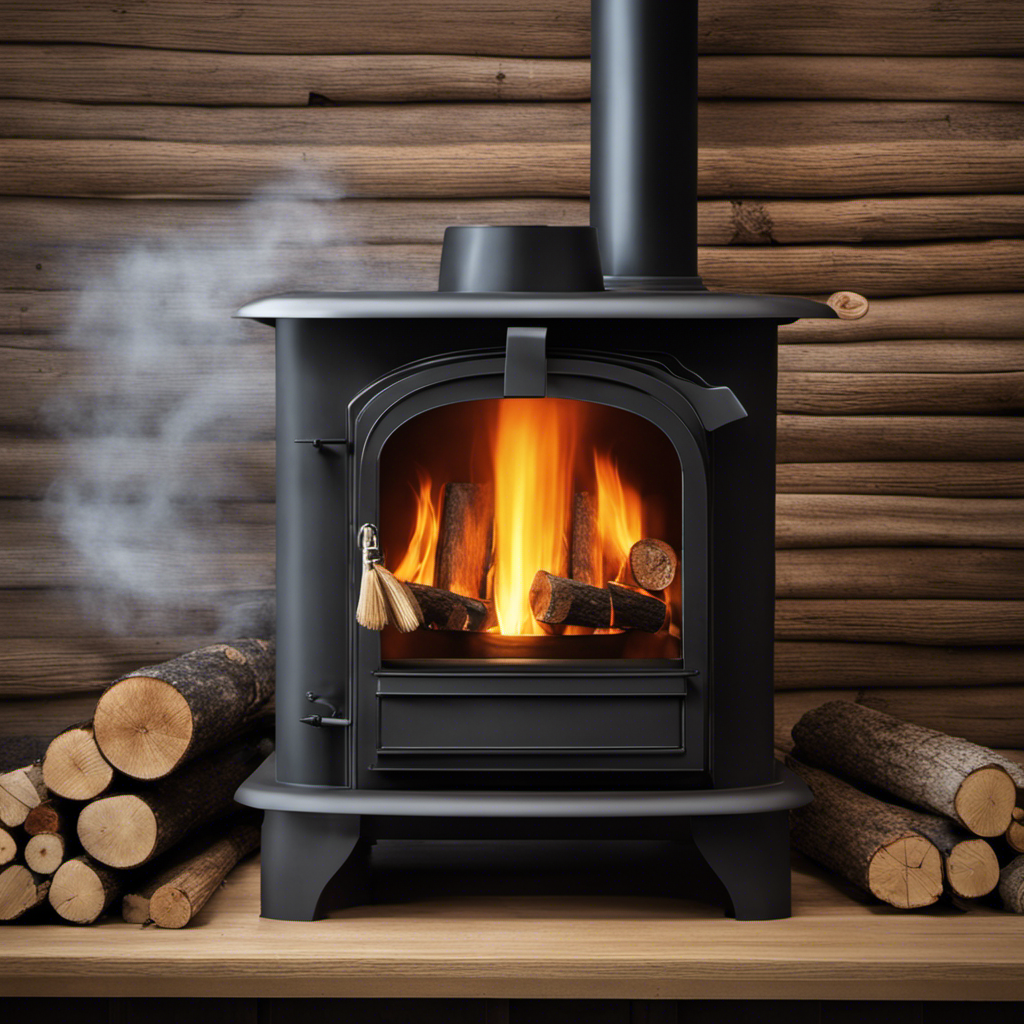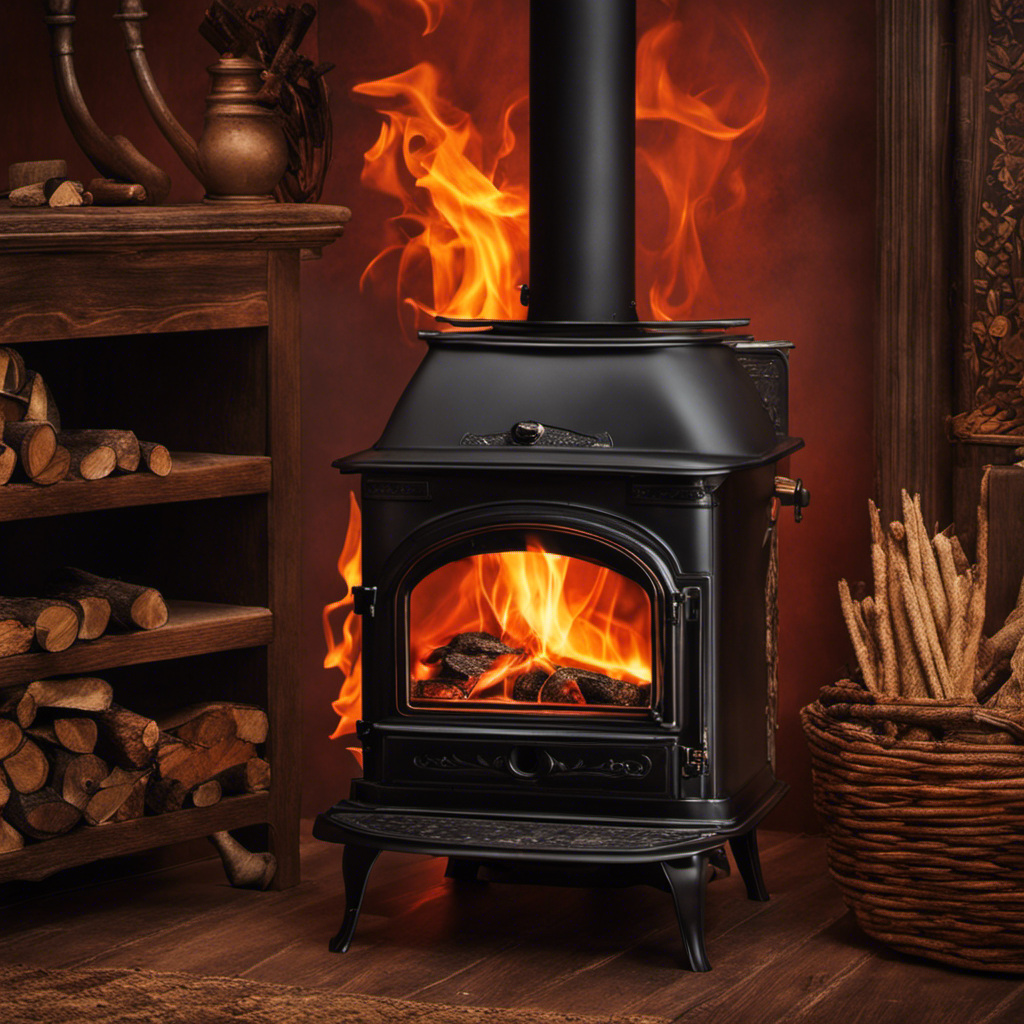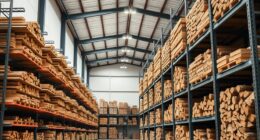I have always been interested in finding out which types of hardwood are best for burning in a wood stove. Therefore, I decided to do a small experiment.
I tried burning different types of hardwoods and measured their heat output and density. In this article, I’ll share my findings and help you determine which hardwoods are the most efficient for your wood stove.
Whether you’re looking for a steady burn or consistent heat, I’ve got you covered. Let’s dive in and find the perfect hardwood for your wood stove.
Key Takeaways
- Oak is a preferred hardwood for burning in a wood stove due to its high density, low moisture content, and efficient burn, providing steady heat for longer periods.
- Maple wood is another excellent choice for efficient burning, as it has high energy content, burns evenly, and can maximize heat output when properly seasoned.
- Birch wood offers a steady burn, high energy content, consistent heat, and cleaner burning due to its low moisture content. It is also readily available and easy to find.
- Beech wood is ideal for those seeking a long burn time and consistent heat. It burns slowly and evenly, ensuring a steady and comfortable heat source, making it perfect for maintaining warmth and energy efficiency.
Density and Heat Output of Hardwoods
I can feel the difference in heat output when I burn hardwoods with higher density. Density is an important factor to consider when choosing the best hardwoods for burning in a wood stove. The denser the wood, the more heat it produces when burned. This is because denser hardwoods contain more energy per unit volume, resulting in a higher heat output.
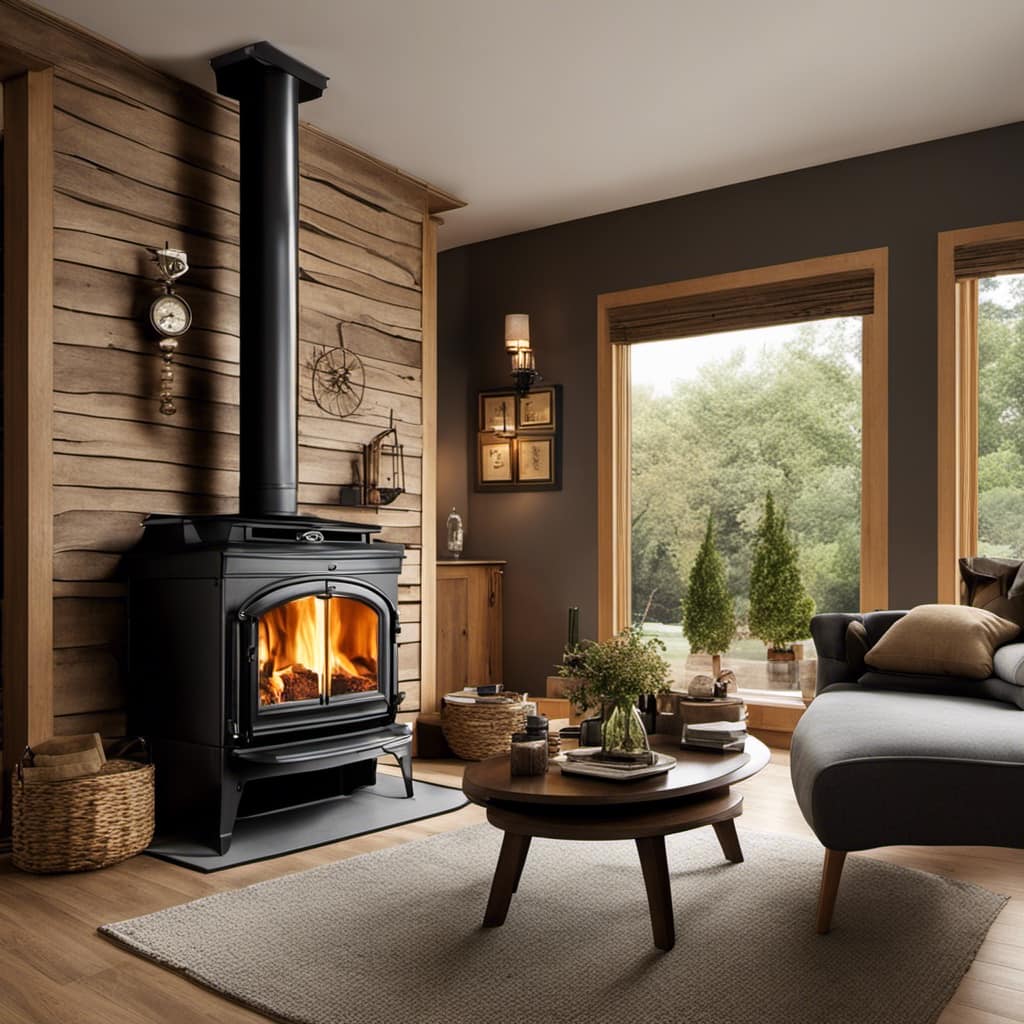
Moisture content also plays a significant role in burn efficiency. Wet or green wood has a higher moisture content, which lowers its heat output and makes it less efficient for burning. On the other hand, dry wood with a lower moisture content burns more efficiently and produces more heat.
When comparing the heat output of hardwoods versus softwoods for wood stoves, hardwoods generally have a higher heat output due to their higher density.
Characteristics of Oak for Wood Stove Burning
Oak is known for its high density and long burn time, making it a great choice for wood stove burning. The moisture content of oak is typically low, around 15-20%, which means it will burn more efficiently and produce more heat. Oak also has a low ash content, which means less cleaning and maintenance for the wood stove.
The dense nature of oak allows it to burn slowly and evenly, providing a steady heat source for a longer period of time. Its high heat output makes it ideal for heating larger spaces or for extended periods of time. Oak is a reliable and dependable hardwood for wood stove burning, ensuring a warm and cozy environment during those cold winter nights.
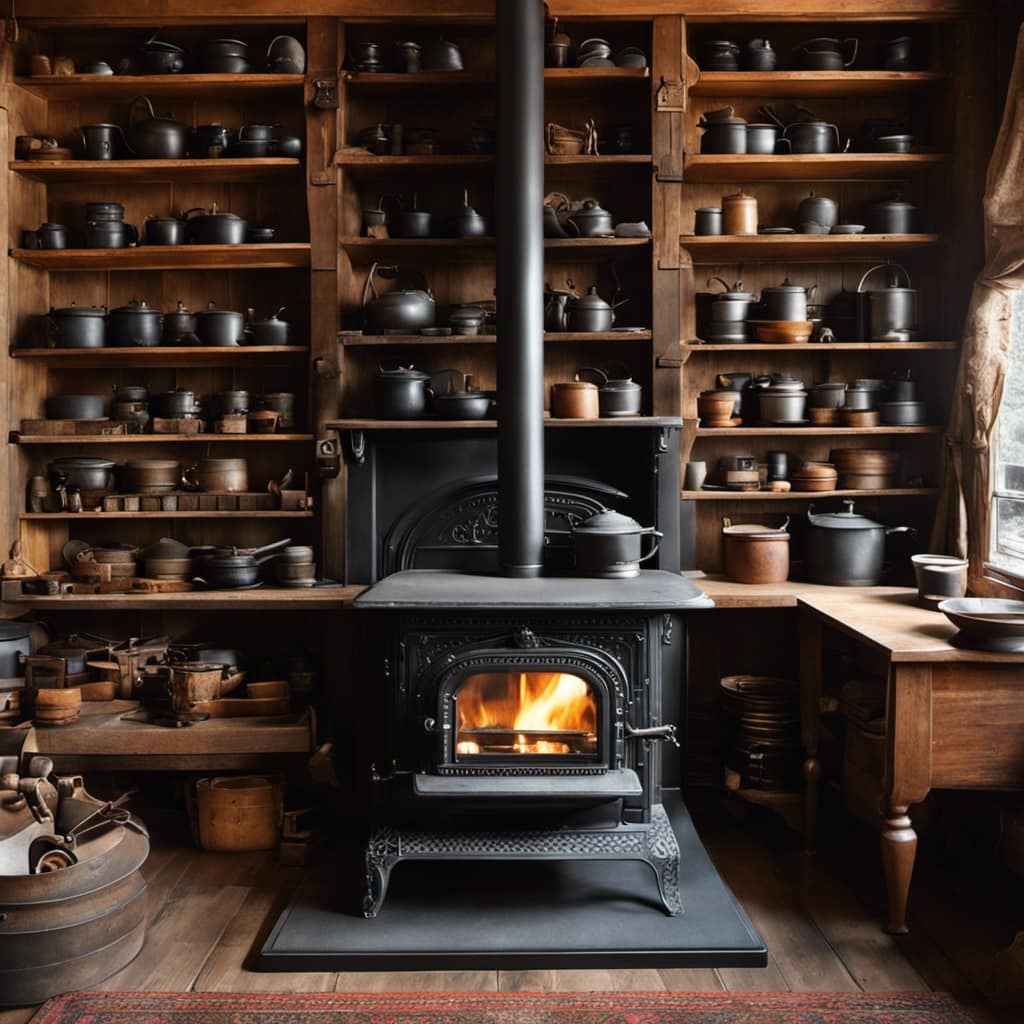
Now, let’s move on to discuss another high-quality hardwood for efficient burning: maple.
Maple: A High-Quality Hardwood for Efficient Burning
There are several reasons why maple is considered a high-quality hardwood for efficient burning.
Maple wood offers numerous benefits when used in wood stoves. First and foremost, it has a high energy content, which means it produces more heat compared to other types of wood. This makes it an excellent choice for heating homes during colder months.
Additionally, maple wood burns evenly and consistently, providing a steady and long-lasting heat source. To ensure optimal burning, it’s important to properly season maple wood. Seasoning involves drying the wood for a minimum of six months to reduce its moisture content.
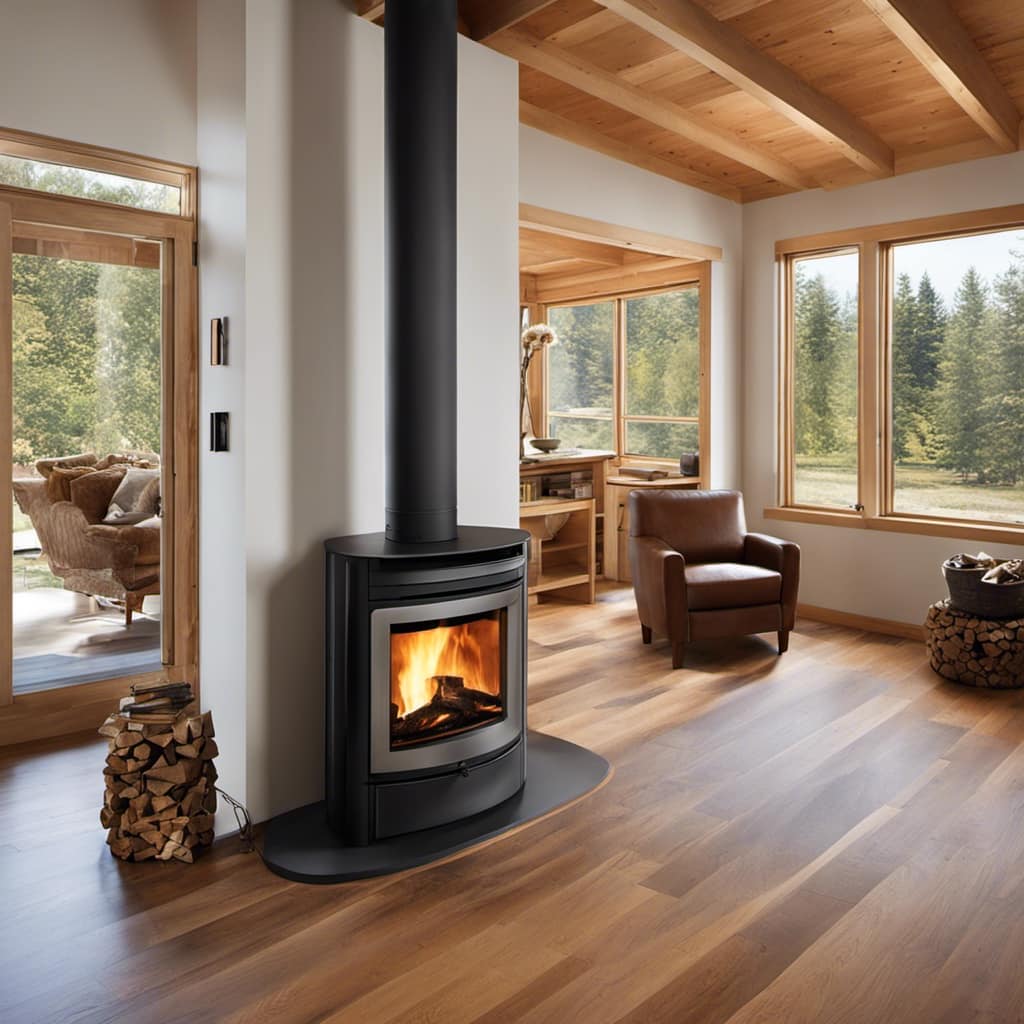
This process enhances the wood’s combustion efficiency and reduces the amount of smoke produced during burning. By using properly seasoned maple wood, you can maximize the heat output of your wood stove and enjoy the benefits of its efficient burning.
Birch Wood: An Excellent Choice for a Steady Burn
One of the best reasons to choose birch wood is its ability to provide a steady burn, making it an excellent choice for heating my home. Birch wood is known for its high energy content, which means it produces a lot of heat when burned. This makes it more efficient compared to other types of firewood. Additionally, birch wood burns evenly and consistently, resulting in a longer-lasting fire.
| Moisture Content | Heat Output | Ease of Ignition |
|---|---|---|
| Low | High | Easy |
| ——————- | ————– | ——————– |
| Benefits | Advantages | of Burning Birch |
| ——————- | ————– | ——————– |
| 1. Provides steady burn | 2. High heat output | 3. Easy to ignite |
| 4. Low moisture content | 5. Efficient and consistent burning |
Burning birch wood not only keeps my home warm, but it also offers other benefits. The low moisture content of birch wood ensures that it burns cleaner and produces less smoke. This means less creosote buildup and reduced risk of chimney fires. Birch wood is also readily available and easy to find, making it a convenient option for heating purposes. Overall, the advantages of burning birch wood make it a popular choice for those looking for a reliable and efficient source of heat.
Beech: a Hardwood With Long Burn Time and Consistent Heat
I prefer burning beech wood for its long burn time and consistent heat, as it keeps my home warm throughout the night. Beech is known for its longevity as a firewood, making it a reliable choice for heating purposes.
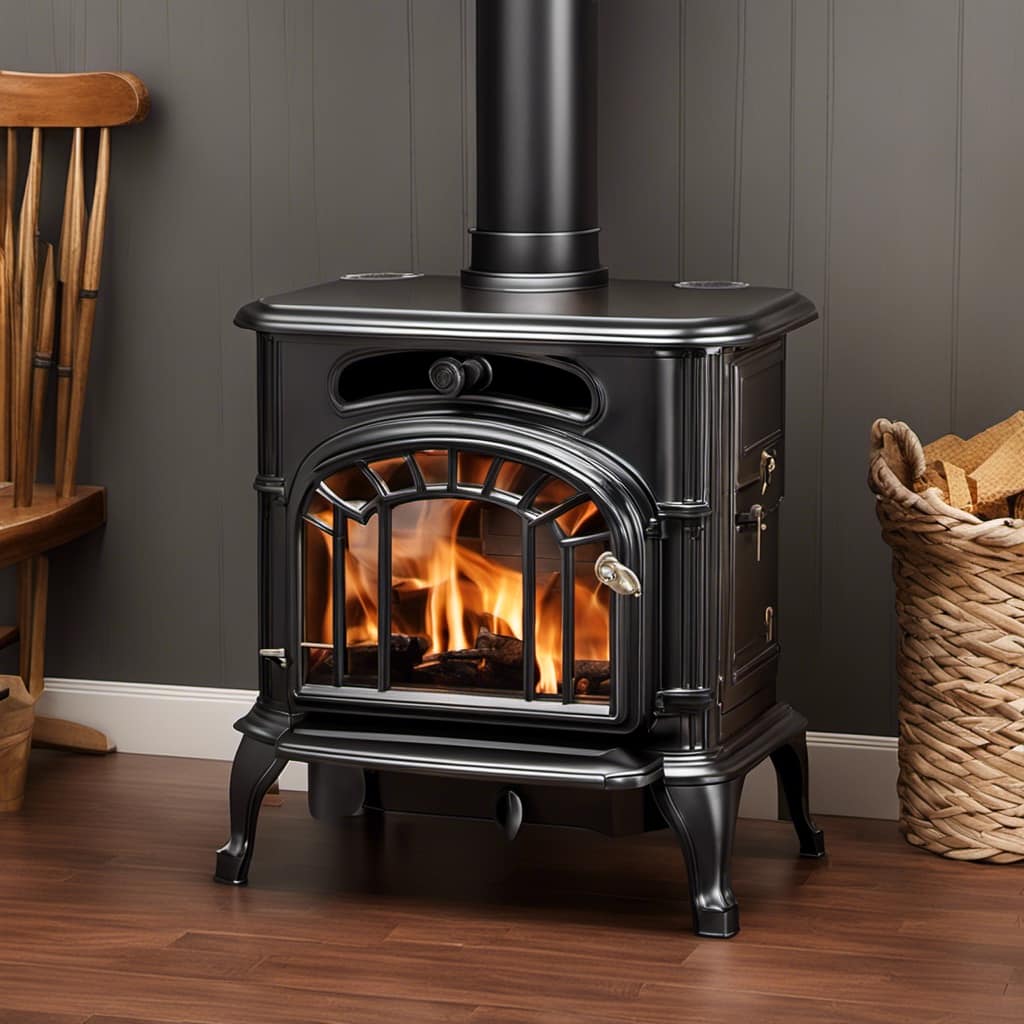
The dense nature of beech wood allows it to burn slowly and evenly, resulting in a longer-lasting fire compared to other types of wood. This is beneficial for those who want to maintain a consistent heat source for an extended period of time.
The steady heat produced by beech wood ensures that my home remains comfortably warm, even during the coldest nights. Additionally, the consistent heat output of beech wood allows for more efficient and effective heating, making it an ideal option for those seeking both warmth and energy efficiency.
Frequently Asked Questions
Are There Any Specific Safety Precautions to Keep in Mind When Burning Hardwood in a Wood Stove?
When burning hardwood in a wood stove, it’s important to take safety precautions. Make sure the wood is properly seasoned for optimal burning. Follow guidelines for maintaining airflow and cleaning the stove regularly to prevent fire hazards.
How Can I Properly Season Hardwood for Optimal Burning in a Wood Stove?
To properly season hardwood for optimal burning in a wood stove, it’s important to allow it to dry for at least six months. This ensures a moisture content of around 20%, which leads to efficient combustion and less creosote buildup. Using hardwood over softwood has the advantage of producing more heat and lasting longer.
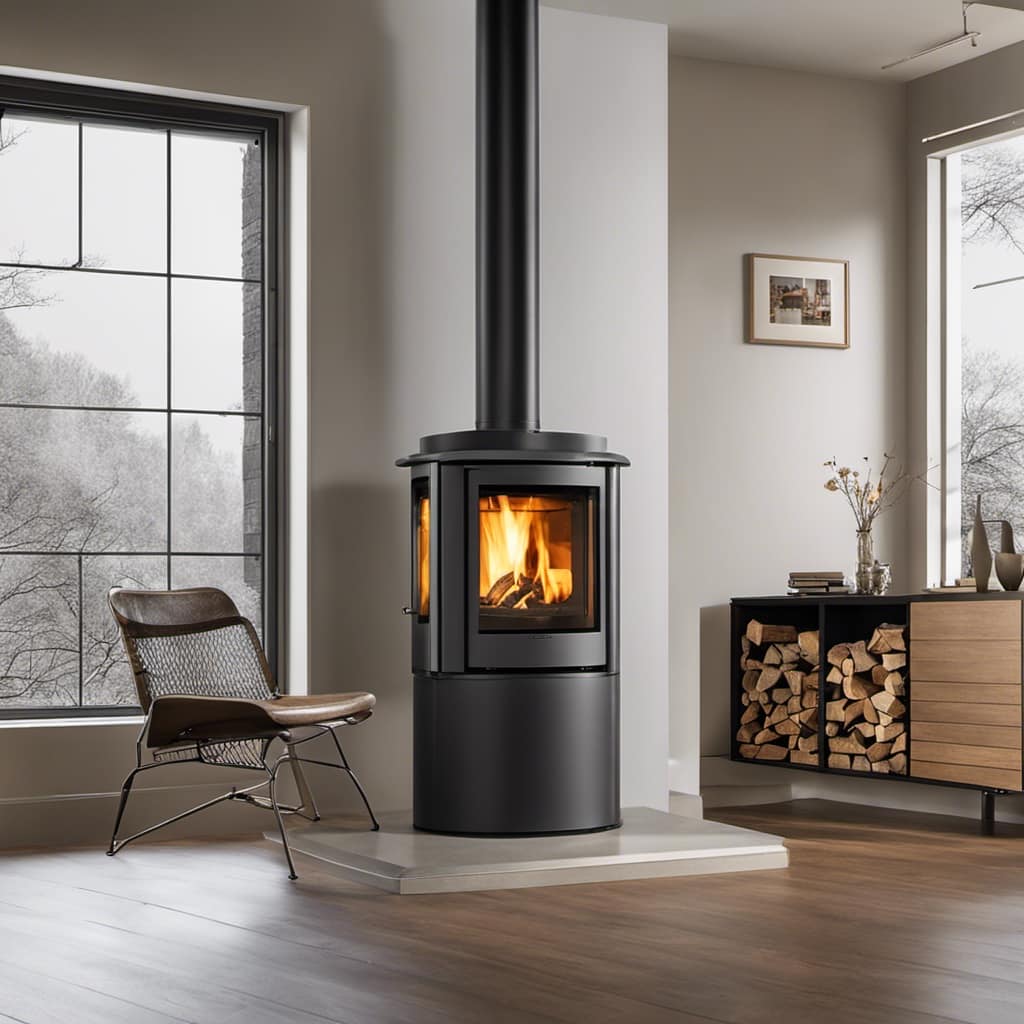
Can I Mix Different Types of Hardwood When Using a Wood Stove, or Is It Better to Stick to One Type?
I find that mixing different types of hardwood for optimal burning in a wood stove can be beneficial. It allows for a longer, more sustained burn. However, using hardwood pellets instead of traditional logs can also provide great benefits.
What Is the Best Way to Store Hardwood for Burning in a Wood Stove?
First, let me share an interesting statistic: choosing the right size wood for your wood stove can increase burning efficiency by up to 30%. Here are some tips for splitting hardwood effectively.
Are There Any Hardwoods That Produce Less Smoke When Burned in a Wood Stove?
Different types of hardwood can indeed produce varying amounts of smoke when burned in a wood stove. By mixing hardwoods together, you can achieve optimal burning conditions and minimize smoke production.
Are Some Hardwoods Unsafe to Burn in a Wood Stove?
When it comes to using a wood stove for heating, it’s important to refer to a reliable wood stove burning guide. Some hardwoods, such as hickory and oak, are safe to burn, while others, like poison ivy and oleander, can release toxic fumes. Always consult a wood stove burning guide for safe options.
Conclusion
After extensive research and analysis, it’s abundantly clear that the best hardwoods for burning in a wood stove are oak, maple, birch, and beech. These remarkable woods offer high density, impressive heat output, and consistent burn time.
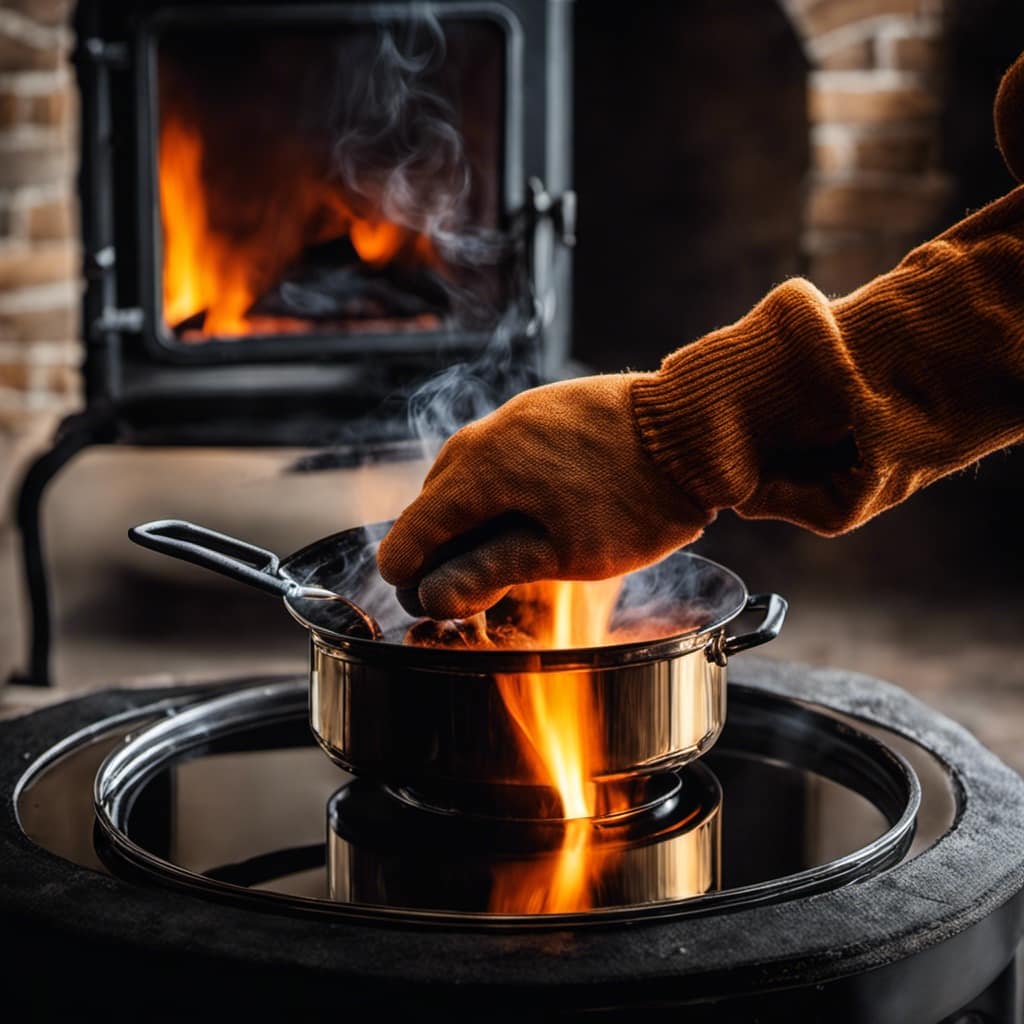
When it comes to keeping your cozy abode warm and toasty, don’t settle for subpar firewood. Embrace the superiority of these hardwood options and let the flames of knowledge guide you to a truly satisfying burn.
Growing up surrounded by the vast beauty of nature, Sierra was always drawn to the call of the wild. While others sought the comfort of the familiar, she ventured out, embracing the unpredictable and finding stories in the heartbeat of nature.
At the epicenter of every remarkable venture lies a dynamic team—a fusion of diverse talents, visions, and passions. The essence of Best Small Wood Stoves is crafted and refined by such a trio: Sierra, Logan, and Terra. Their collective expertise has transformed the platform into a leading authority on small wood stoves, radiating warmth and knowledge in equal measure.




